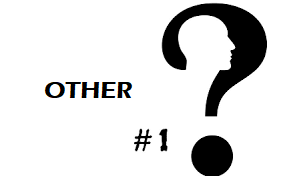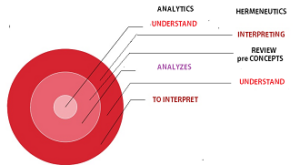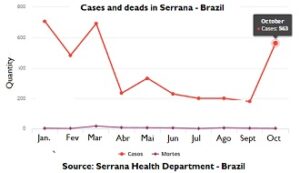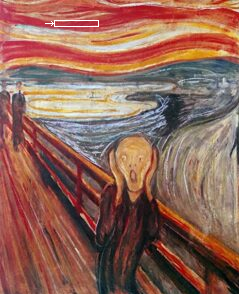
Arquivo para a ‘Information Science’ Categoria
The Civilization Crisis
 It is not just an idea of the apocalyptic, the pessimistic and the tragedies, dark spirits who do not really reflect on reality, it is those who think humanism, who look to a polarized, fragile and powerless life in the face of a pandemic (see Europa in the previous post) is the crisis of fragility that does not see itself as fragile.
It is not just an idea of the apocalyptic, the pessimistic and the tragedies, dark spirits who do not really reflect on reality, it is those who think humanism, who look to a polarized, fragile and powerless life in the face of a pandemic (see Europa in the previous post) is the crisis of fragility that does not see itself as fragile.
Arrogants, pseudo-sages, and pseudo-prophets are on call, but even an optimist like Edgar Morin bends over when he sees a system that cannot deal with its fundamental problems, it disintegrates, thus began his recent lecture on the metamorphosis of humanity, he told the event : “he becomes even more barbaric”, but remember that this is not the first and probably not the last metamorphosis of humanity, we were at the origin (he said for over 100,000 years) hunters and gatherers.
There was no army, no state or classes, but little by little some groups wanted to dominate others, this happened in India, China and the Middle East, in the Andes where an Inca Empire was organized and in Mexico (where he gave the lecture).
These societies have metamorphosed for better or worse, he has not made a statement about this, but he thinks that a metamorphosis over our nation-states is possible.
It states that it is necessary to have hope, but hope is not certainty, the hope that in the past was a belief now, but if hope exists it is the necessary leaven for great transformations, and it is understood that this is the moment we are living this reality, in a postmodern or post-postmodern world, there is a transformation.
It remains for us to know which one leads us to destruction, and which one is truly the bearer of hope, it doesn’t give great tips, but let’s do an exercise.
The first great destruction is war, with the arsenal of ultra powerful weapons, even interplanetary, there are several objects around the planet, it is necessary to defend peace with the same force that we defend justice, a war would now be a catastrophe.
The second major destruction is social imbalance, insecurity and the lack of a sustainable plan for the use of natural resources, the large meetings only discuss the issue of pollution and deforestation in some regions of the planet, when they should discuss the planet as a All in all, nature shows signs of exhaustion and a greater imbalance in natural forces, of planetary proportions, is expected.
As Edgar Morin says, it is necessary to have hope, we have already gone through other stages of the civilizing process through similar situations, of course the proportion is now planetary.
Edgar Morin – Do esgotamento à metamorfose dos sistemas – YouTube
Covid alert and Christmas parties
Europe is once again concerned about Covid’s infection rates, when everything seemed to be moving towards a happy end-of-the-year outcome, the arrival of winter, little vaccination and doubts about vaccines even by health professionals, made the indexes grow again.
when everything seemed to be moving towards a happy end-of-the-year outcome, the arrival of winter, little vaccination and doubts about vaccines even by health professionals, made the indexes grow again.
Last Thursday, Germany registered a daily record of 50,000 new infections in 24 hours, in Russia 40,000 cases, Eastern European nations: Slovenia, Croatia, Georgia, Slovakia and Lithuania have the highest rates of new cases of the disease, too in France and the United Kingdom the number of cases is growing (picture).
Portugal, which has the highest vaccination rate, close to 90%, will resume preventive measures such as the use of masks, in Austria and the Netherlands there are lockdown measures, the protests against this new restriction measure provoked a confrontation with the police in the weekend.
In an interview given to the BBC, Hans Kluge, WHO regional director said there could be 500,000 new deaths in Europe by March if measures are not taken.
We are in a hot climate, the moving average of cases and deaths in Brazil is decreasing, but the parties and a certain relaxation in preventive measures are worrying, there are no measures in any part of the country concerned with a possible new one, where it seems distant, but remember the 2019 carnival when there were some signs and we didn’t worry, the consequences came in March of that year.
Measures in shopping malls, supermarkets, concerts and sports squares are totally relaxed and we will only know the consequences at the beginning of 2022, even if only preventive, these measures can help prevent a new outbreak that would leave the country even more in despair, what we observe is a concern only with liberation, the election year is approaching and no one wants to take unpopular measures, but health should come first, even in relation to the economy already in crisis.
If we’re going to pay to see it, the cost could be high.
The truth among men
Gadamer establishes the need for co-reference for the construction  of truth among men, the philosopher Socrates also said that the truth is not with men, but among men, so every self-referential discourse, even that appropriated by a group no longer has a truth growing and becomes just rhetoric.
of truth among men, the philosopher Socrates also said that the truth is not with men, but among men, so every self-referential discourse, even that appropriated by a group no longer has a truth growing and becomes just rhetoric.
Emmanuel Lévinas (1906-1995) developed the aspect of human finitude, as that which gives a provisional totality, in his book Totalidade e Infinito where he discusses the theme of alterity, with a central issue that is not being able to objectify the Other , and it is not about subjectivity, but the possibility of thinking of the Other in its absolute Otherness, in other words, as a totally other.
His book cannot be understood without an analysis focused on Husserl and Heidegger because of its phenomenological option in which it is affiliated, thus developing in this first chapter the category of alternation, while the second will deal with interiority, there appear notions of categories such as: jouissance , economy, home, ownership, work and the feminine is a topic that is so current in the question of gender and reflects the relationship of the Self with the real, enabling the building of a being at the same time separate and open to the outside.
Thus, the third chapter relates to the exteriority that underlies an ethics proposed by Lévinas, how an opening is given or built in Being, through the analysis of the categories of Infinity, Face and Exteriority, they are fundamental for the understanding of the Levinasian universe. .
The problem of human finitude in the aspect of truth can refer to a transcendence different from the idealist proposal, where the imperative category is linked to the concept of subjectivity: “acts in such a way that it is a model for others”, thus it is possible to develop in a personal universe an ethics, while for Lévinas, as it is for Gadamer and it was for Socrates, truth can only exist in a process of dialog with the Other and with the outside, every closure is self-referential.
Thus the “Other remains infinitely transcendent, infinitely strange, but his face, where his epiphany takes place and which appeals to me, breaks with the world that may be common to us and whose potentialities are inscribed in our nature and which we also develop in our existence” (Lévinas, 2008), here an epiphany that is only human.
We approach the Christmas feasts, in the Christian liturgy it is the feast of the divine epiphany, the divine manifestation to the peoples, for many only the feast of the wise men or the baptism of Jesus, but for those who think that the truth is “among men”, the presence of God with Us (Emmanuel) happens from the birth of the God-child.
In the biblical text (Jn 18: 37), when asked by Pilate if Jesus was the king of the Jews, he replied: “You say: I am king. I was born and came into the world for this: to bear witness to the truth. Everyone who is of the truth listens to my voice”, thus this truth among men is also established for Christian culture as the incarnate word.
Truth and finities´s humans
Not only did Hans Georg Gadamer write about the truth regarding Human finitude, Emmanuel Lévinas also developed the theme.
Human finitude, Emmanuel Lévinas also developed the theme.
In Gadamer, the conclusion about the truth of human experience is the awareness of its finitude, that is, it is knowing your own limits, knowing that you are not lord of time and the future, nowadays that you are not lord of nature and its behavior , the great Enlightenment ideal, and so it has its limits and its plans are insecure.
Thus, in Gadamer, the issue of rhetoric and discourse is not exactly an issue and the question is not really called into question, to be able to question it is necessary to really want to know the truth and it may be outside the limits of the questioner, says in your text:
“To ask, you have to want to know, that is, to know that you don’t know. And in the exchange of questions and answers, of knowing and not knowing, described by Plato as a comedy, one ends up recognizing that for all knowledge and discourse in which one wants to know the content of things, the question takes precedence. A conversation that wants to explain something needs to break these things through with a question” (GADAMER, 2008, p. 474).
Thus, it will be inscribed beyond prejudice, and in the constitution of new horizons, thus understanding the text or a fragment of the past, for Gadamer is to understand it from the issue that should be seen as a process of continuous fusion or broadening of horizons through which the interpreter participates with others in the long and arduous path of meaning, he goes beyond the romantic and historical Enlightenment point of view, which is unacceptable: the symbolic and plural language, characteristic of the narrativity of things.
But what does this mean? what this means for the philosophical hermeneutics that recognizes human finitude, there is no immediate possibility of a coincidence with the real, as every human understanding is linguistically mediated as every language is, in the Aristotelian view, a hermenia (interpreter) originating from the real and this it can be extended to cultures, to peoples, and especially to native peoples, primary sources of discourse and their own language.
As man is finite, only in language can his fundamental dialogical power reach what Western philosophy calls objectivity (proper ideality), but it must go beyond the point of view of the anonymous transcendental subject (idealist subjectivity) to reach the dimension of co. -reference of concrete men, of others.
Concreteness is thus the word that decenters and challenges, places what is said in otherness, and its perspective of tracing a fusion of new horizons does not end.
GADAMER, H.G. Truth and Method I. Fundamental features of a philosophical hermeneutics. 10th ed. Petrópolis, Brazil: Vozes, 2008
The truth and the method
Hans Georg Gadamer is the heir to Heidegger’s ontological hermeneutics, and he developed philosophical hermeneutics through his masterpiece Truth and Method, first published in 1960.
hermeneutics, and he developed philosophical hermeneutics through his masterpiece Truth and Method, first published in 1960.
To develop it, it needed to revolutionize modern Western hermeneutics, through the critique of aesthetics, the theory of historical understanding and the development of the ontology of language, to complement the Heideggerian method of the hermeneutic circle.
The publication of Truth and Method still means, today, a new study in the science of interpretation, which enters an important phase called philosophical hermeneutics, which should help human disciplines to seek, from experience, the understanding of their own being, constituting a a new philosophical attempt to assess understanding itself as a process of knowledge of the ontological status of man, thus founding a new anthropology.
As a philosophy of language, we are in the middle of a linguistic turn, it is not just access to the thing and not the truth, as the correspondence between word and thing only occurs when the thing is known, thus learning (teaching, search , question, answer and the information itself) is only done by thinking that leads things to the world of ideas, and thus words are no more than representation of signs to which meaning is attributed. and begins his study by Humboldt.
It was Wilhelm von Humboldt who used the theory of the human “strength of the spirit” as a source of language production, his thesis addresses an “idealist philosophy that highlights the subject’s participation in the apprehension of the world, but also the metaphysics of individuality, developed by the first time by Leibniz” (GADAMER, 2008, p. 568).
As a way of questioning the history developed in an idealistic way, Gadamer, when criticizing Dilthey, starts from preconceptions, where the historian “submits the otherness of the object to the previous concepts themselves” (Gadamer, 2008, 513), and is thus illustrated in his text: “despite all scientific methodology, he behaves in the same way as anyone who, a child of his time, is uncritically dominated by previous concepts and prejudices of his own time” (Idem).
For a new understanding, as a starting point for a new anthropology, interpreting is not a means of reaching understanding, but entering into the very content of what one wants to assign a meaning in a unitary or unilateral way, but that the “Thing of which speaks the text comes to the speech” (GADAMER, 2008, p. 515).
The text at the end questions linguistics itself, which states that each language does this in its own way, but the author emphasizes another focus looking for a unity between thinking and speaking, this infers from the fact that any written tradition can only be understood, despite the great multiplicity of ways of speaking, identifying an existing unity between language and thought, thought and speech, and in this case what is the conceptuality of all understanding? Conceptual interpretation is the way in which the hermeneutic experience is carried out.
As all understanding is an application of language, the interpreter is always in a continuous development of concepts, language remains alive both in speaking and in understanding the entire process of understanding, interpreting and thinking.
GADAMER, H.G. Truth and Method I. Fundamental features of a philosophical hermeneutics. 10th ed. Petrópolis, Brazil: Vozes, 2008
Form and act
Information is a strong word at this time in history, however the concept of form of in-form seems to be separate from the concept of matter, hylé for the Greeks.
the concept of form of in-form seems to be separate from the concept of matter, hylé for the Greeks.
Modern philosophy has separated form from content, as well as separating a label from the ingredient in a bottle, but this comes from the reduced understanding of what matter is, the hyle of the Greeks, whose thinking in Aristotelian terminology interconnects them in hylemorphism ( ὕλη, hýle = “matter”; μορφή, morphé = “form”) and in-formation is that.
For this to have an anthropological reach, necessary for the discourse of cultural diversity, it is necessary to link act and potency, as Thomas Aquinas did, where matter is not what we call today (as substance, for example), but what it is as a possibility or in potentiality, written like this by Thomas: “matéria est id quod est in potentia” (matter is what is in potentiality) (THOMÁS, ST I q.3 a.2 c).
Thus the act is the actual existence, or the acting itself, that is, “forma est actus (form is act) (ST I q.50, a.2, obi.3).
Thus, the articulation of the binomials potency x act and matter x form in this way, “matter is nothing but potency, since form is what something is for, as it is the act” (TOMÁS, ScG II, c.43), these categories they give a distinction from fundamental metaphysics, and anthropologically they mean that one thing is the possibility of existing or acting: potency or matter, something else is actually existing or acting: act or form.
Some modern theologies want to separate body and soul, that is, without eschatological and biblical foundation, otherwise the human figure of Jesus would be divided into two: the divine and the human, which would be in opposition and fight against each other, and that is why the Christian anthropology must be strictly unitary, as it is in Thomas Aquinas.
The existence of a body in the human condition is the union between power and act, between matter and form (seen in this new aspect linked to content and essence), without its actual existence (form) the body would not even exist , but only the possibility of existing (potentially) makes it exist in act, this unity is radical, since the necessary condition for its existence is the body. this is fundamental to understand the Christian anthropology written clearly by Thomas: “The human being is not just soul, but something composed of soul and body” (THOMÁS, ST I q. 75 to 4c), if on the one hand all materialism (which is not hylemorphism) denies the existence of the soul, a lot of bad theology seeks to deny the existence of the body, it is the modern dualistic relationship, crystallized in objectivity and subjectivity, in which both are mutilated.
According to Thomas Aquinas, human living bodies and actual existence (form, also called by him the intellective soul) is immortal, unlike other non-human living bodies, whose existence has a beginning and an end, not an eschatological end, but the finalist end of an interruption, for all humans die, and for him death is explained as a temporary deficiency through which we pass into immortal existence and overcome the radical deficiency of the living body through death.
Put more clearly: “That the soul remains after the body, this happens because of a deficiency of the body [per defectum corporis] which is death.
THOMAS AQUINAS. Theological Summa São Paulo: Loyola, 2001-2006. 8 v.
The pandemic is not over
It is sad and distressing, but the pandemic is not over, Europe is very concerned about covid-19 and in Brazil, where the numbers have not yet dropped from 260 deaths a day, and the Oswaldo Cruz Foundation of Brazil (Fiocruz) registered a increase in children in cases of respiratory syncytial virus (RSV) with records higher than Covid 19.
is very concerned about covid-19 and in Brazil, where the numbers have not yet dropped from 260 deaths a day, and the Oswaldo Cruz Foundation of Brazil (Fiocruz) registered a increase in children in cases of respiratory syncytial virus (RSV) with records higher than Covid 19.
While cases are on the rise in countries like Germany, Russia, Hungary, Slovakia and the Czech Republic, Russia set a new record for infection and deaths last week (It has only 34% of the population vaccinated), concern is growing over the arrival winter, and in Austria the government decreed a lockdown for unvaccinated people.
In Russia the measure taken was a national recess from October 30th to November 7, in Germany the director of virology at the Charite hospital in Berlin emphasized: “We have a real emergency now” as the country has registered almost 40,000 cases of covid , the biggest since the beginning of the pandemic, and made an alarming prediction, 100,000 people could die.
In Brazil, although moving at a slower pace than in the previous period of vaccine vaccination, the number is increasing and in many places there is a demand for people who did not come for the second dose. close to 59% of the Brazilian population is fully immunized and almost 80% have already received the first dose.
Seven Brazilian States are on the rise after a sharp fall in the previous month: Santa Catarina, Pará, Roraima, Rondônia, Bahia, Ceará and Piauí, a case that drew attention was Serrana (Brazil), where the São Paulo government carried out a mass vaccination trying to make the model city for vaccination, there were 563 cases in the last month and such a high number (the city has 45,644 inhabitants) did not have a clear explanation (see photo, official data from the municipal health Departament).
The end of the year parties are approaching and the concern is with the surveillance that does not exist in public spaces (concerts, shopping malls, supermarkets, etc.) and a flare-up of the disease would not only bring a worsening of health, but would extend the social crisis that is already affecting unbearable levels, there are no measures around this aggravation, the rise in prices is there.
Another worrying factor is now the psychological health of the population subjected to high stress and constant pressure of concern about the disease without clear policies, it is already possible to observe a large number of people with changes: anguish, tension, depression and antisocial attitudes, overcoming the crisis will require a lot of public efforts.
It is easy to observe in the markets and in daily consumption an increase in alcoholism and use of medicines, the end of the year parties could improve this aspect, but the social crisis does not help, the parties should be modest or in non-Christmas parties where the exaggeration and Drinks allow you to tap into the energies contained in the pandemic.
Because Covid 19 is not over
Last Thursday (11/04) Hans Kluge, WHO director for Europe, said 53 countries in the region are facing “a real threat of the resurgence of COVID-19” and encouraged governments in the region to take urgent action, in China the government even advised the population to stock up on food, the new wave is due to the delta variant.
said 53 countries in the region are facing “a real threat of the resurgence of COVID-19” and encouraged governments in the region to take urgent action, in China the government even advised the population to stock up on food, the new wave is due to the delta variant.
In Germany, 66.5% of the population is fully vaccinated, but according to the RKI (Robert Rock Institute, responsible for the control of infectious diseases), there are more than 3 million people over 60 years old who have not been vaccinated and The risk is high, and last Friday it registered just 37,000 infections, a record number, while Russia registered 40,735 new cases and 1192 deaths related to the virus last Friday, according to the government’s own data.
France, Holland, Italy and England record high infections, Portugal has a high despite having the highest vaccination rate in the world (almost 90%) and only Spain did not have high infections.
In China, the outbreak, which is still small in number, affected several regions of the country, and the government even advised the population to stock up on food.
Brazil has 58.2% of the population fully vaccinated, while 76.3% have already taken at least one dose, the safety margin is still small for a general release that has already taken place, there is no more temperature control and agglomerations. worryingly, the country is still in the range of 300 daily deaths, and over 11,000 infections.
Vaccination continues, the country received this Sunday 1.1 million doses of vaccine against Covid 19 at Viracopos airport, despite some currents criticizing the quality of the vaccine, there are no scientific criteria for this criticism.
The ministry said the number by the weekend was 122.3 million people immunized, and the target population is 177 million people.
The additional dose for elderly groups, the so-called “third dose” reached 8.9 million additional doses, according to the Ministry of Health.
Looking at the European scenario, it is good not to relax and we must continue the full vaccination schedule, only one dose does not guarantee immunity, even in the case of Janssen, a booster dose is being applied.
The cry of the afflicted
In many moments of personal difficulties, world conflicts and natural tragedies, there is always an apparent cry of despair and pain, but our time is a silent cry for those who lose their reason for living, the pandemic has also caused many anguish, loneliness and despair.
tragedies, there is always an apparent cry of despair and pain, but our time is a silent cry for those who lose their reason for living, the pandemic has also caused many anguish, loneliness and despair.
The famous pcitura Norwegian Edvard Munch’s The scream represents an androgynous figure in a moment of deep anguish and despair, with the Oslo fjord at sunset in the background, characterizes well what affliction means in our time, in addition to misery and lack of solidarity , the anguish and anxiety of the figure may be the author’s own, the phrase written at the top of the painting: “it could only have been painted by a madman”, analyzed by the Oslo National Museum concluded that it was the author’s.
The aspect of anxiety would remain veiled, were it not for this analysis, since the author stated on one occasion: “I have suffered a deep feeling of anxiety that I have tried to express in my art”, and this reflects our contemporary fears.
GAD (Generalized Anxiety Disorder) is one of the symptoms of this condition, which can also be bipolar or some other type of lack of control, this type was generically called Neurotic Anxiety, but there are two others: Realistic and Moral.
Realistic anxiety refers to the fear of something existing in the outside world, so a pandemic or a natural catastrophe (hurricane, earthquakes, sudden changes in climate, etc.) is basically a kind of fear of something real happening but that puts us in a different adrenaline.
Moral is the one that refers to the feeling of guilt, which triggers a fear of being punished, and this leads to a situation of conflict in the interior, so the person loses sensitive aspects of their interior: the unconscious threatening to enter the conscious what it means in practice a loss of self-control.
But the afflicted are also the helpless, the abandoned and the rejected by society, the various types of prejudices on which current controversies are born.
In the Christian reading, the text of Matthew (5:4) although some translations put as “afflicted”, the translation we prefer here: “Blessed are those who mourn, for they will be comforted!”, because beyond the aspect of “sickness “there is structural evil and social evil that push many people into this state, and blaming them just means adding to any kind of “affliction” the neurotic anxiety that is born of a disproportionate sense of guilt, and this is the great kind of current social pressure.
But what would be the comfort the bible speaks of, the comfort of those who believe is that the only evil they should fear is the soul, so contrary to what many moralistic interpretations say, it is a balanced morality and without the exaggeration of guilt that it leads to an inner state without this kind of anxiety.
The meekness in times of polarization
Meekness is a fundamental virtue for resolving conflicts, establishing new spaces for dialogue where it ended and opening new horizons where they seem impossible.
establishing new spaces for dialogue where it ended and opening new horizons where they seem impossible.
John Calvin has a very noble phrase: “It will be useless to teach meekness unless we have started with humility”, in fact the great reason why some seem right and others unreasonable. on the sides (the opposite of humility) and within these parameters, no dialogue will be possible, or what we prefer, no “new horizon” will be drawn that establishes a future point where conflicting points may enter into a process of convergence.
Polarization is inevitable may be the arguments of some, yes if reaching a certain point of conflict this is valid, but we must know that the actual way out of a conflict will have to have the flag of peace at some point and it cannot be the The flag of submission of the vanquished, the pax Romana, after Rome conquers its territories, it is submission to an authoritarian concept that at a certain point will return to war.
Power is always asymmetrical, this is true, but meekness can lead to it being exercised with modesty and justice.
Polarization is logic may be the argument to justify it, but remember that fuzzy logic, paraconsistent logic and other logics are not binary, yes or no, and that there are never only two sides, this is an idealistic position that it induces duality, there can be multiple sides, so the really fair logic admits a third hypothesis.
These will never be winners and will always be by the wayside may be another thought, as paradoxical as the divine teaching may seem, in many religions, is that meekness and humility lead people to high, one of the biblical beatitudes says (Mt 5, 5): “Blessed are the meek, for they will possess the land” and so where is their power, the conquest through perennial values can only lead to plenitude and perenniality itself, the problem is to yield to values tricky and unfair.
The construction of a perennial reality, a time of peace and justice, as we begin to emerge from a pandemic, is fundamental, even if it seems distant.

